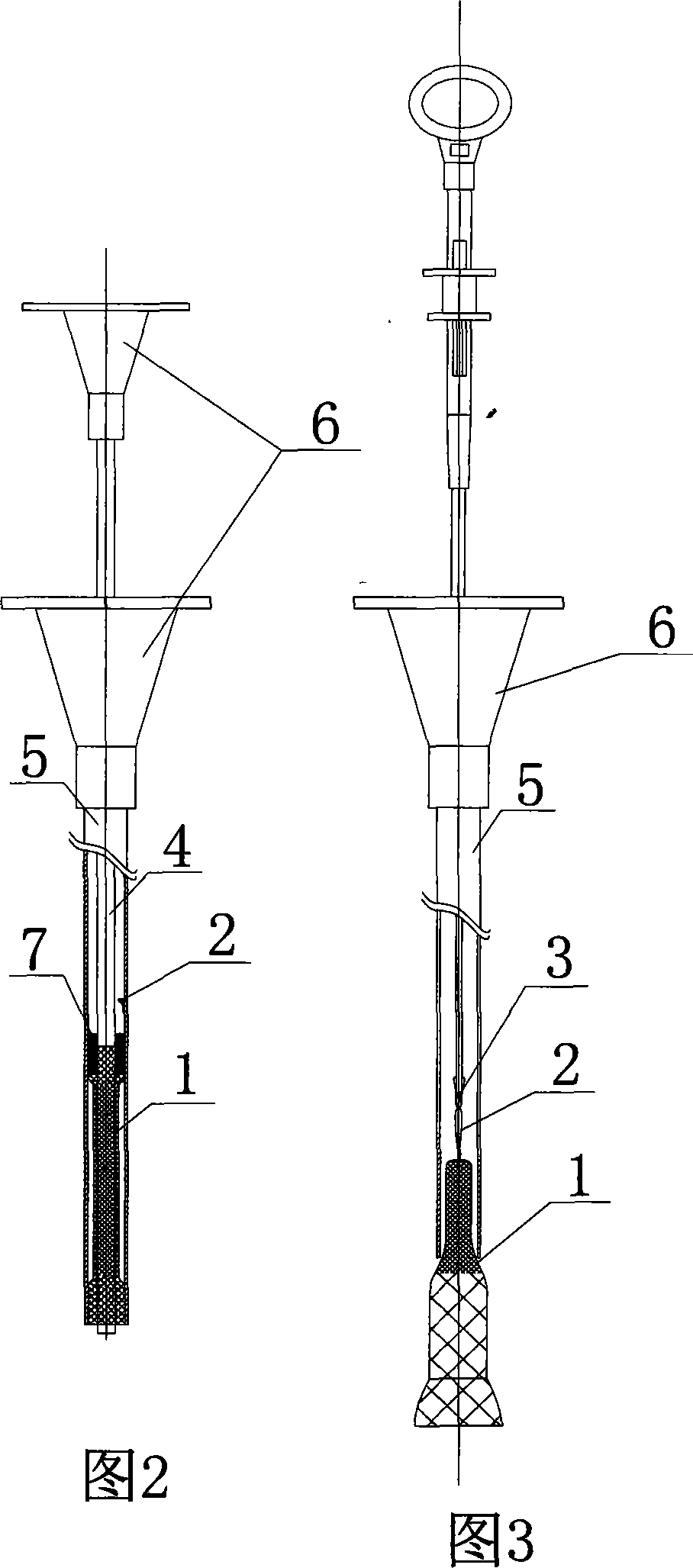Nickel-titanium memory alloy esophageal stent placing and recycling device used in X-ray perspective
The technology of a nickel-titanium memory alloy and a recovery device is applied in the field of medical devices, which can solve the problems of increasing the treatment cost of patients, increasing the labor intensity of doctors, and difficulty in swallowing food, so as to achieve low labor intensity for doctors, reduction of treatment costs, and less pain for patients. Effect
- Summary
- Abstract
- Description
- Claims
- Application Information
AI Technical Summary
Problems solved by technology
Method used
Image
Examples
Embodiment 1
[0020] The operation steps of nickel-titanium memory alloy esophageal stent placement are as follows:
[0021] 1) Insert the inner cannula into the outer cannula first, let the end with the latex ring come out of the outer cannula, put the upper end of the frozen nickel-titanium memory alloy esophageal stent on the latex ring at the lower end of the inner cannula, and then insert The nickel-titanium memory alloy esophageal stent is stuffed into the outer sleeve together with the latex ring, and then the handle of the inner sleeve is pulled back, and the latex ring pulls the nickel-titanium memory alloy esophageal stent into the outer sleeve for standby;
[0022] 2) During the operation, contrast agent is first used to contrast the lesion tissue, and under the supervision of the X-ray machine, the placement and recovery device equipped with the Nitinol esophageal stent is sent from the patient's mouth to the esophageal stenosis. Then use the latex ring on the inner cannula to p...
Embodiment 2
[0024] The operation steps of nickel-titanium memory alloy esophageal stent recovery operation are as follows:
[0025] 1) First use a contrast agent to contrast the lesion tissue, and under the supervision of an X-ray machine, insert the overtube into the patient's stomach close to the fallen nickel-titanium memory alloy esophageal stent, and insert the sampling forceps from the middle of the overtube to clamp the metallized ring tight Oral line, pull it into the outer tube, then pull out the outer tube, and take out the nickel-titanium memory alloy esophageal stent;
[0026] 2) Check the integrity of the removed Nitinol esophageal stent. If it is intact, follow the operation procedure of Nitinol esophageal stent placement again under the supervision of the X-ray machine to put the Nitinol esophageal stent back into the designated place. Location.
PUM
 Login to View More
Login to View More Abstract
Description
Claims
Application Information
 Login to View More
Login to View More - R&D
- Intellectual Property
- Life Sciences
- Materials
- Tech Scout
- Unparalleled Data Quality
- Higher Quality Content
- 60% Fewer Hallucinations
Browse by: Latest US Patents, China's latest patents, Technical Efficacy Thesaurus, Application Domain, Technology Topic, Popular Technical Reports.
© 2025 PatSnap. All rights reserved.Legal|Privacy policy|Modern Slavery Act Transparency Statement|Sitemap|About US| Contact US: help@patsnap.com


